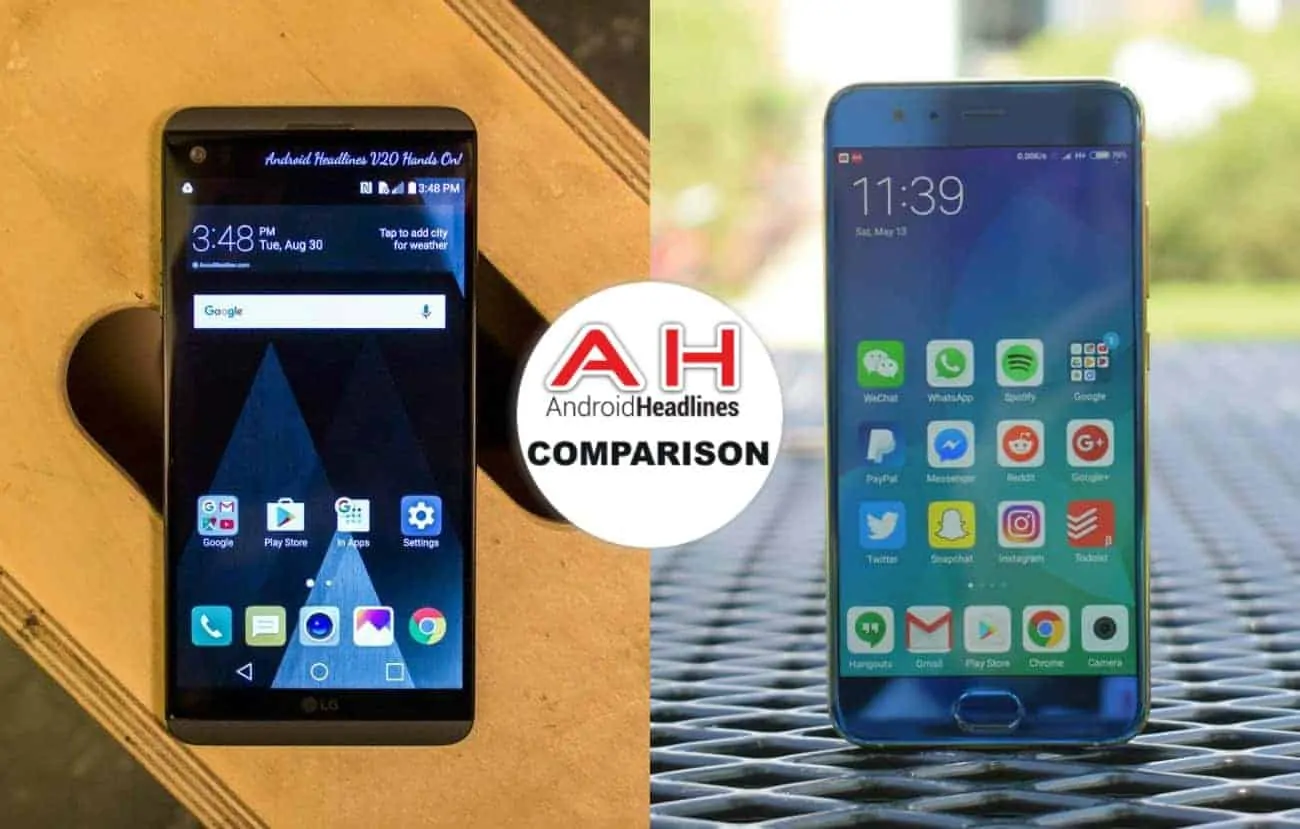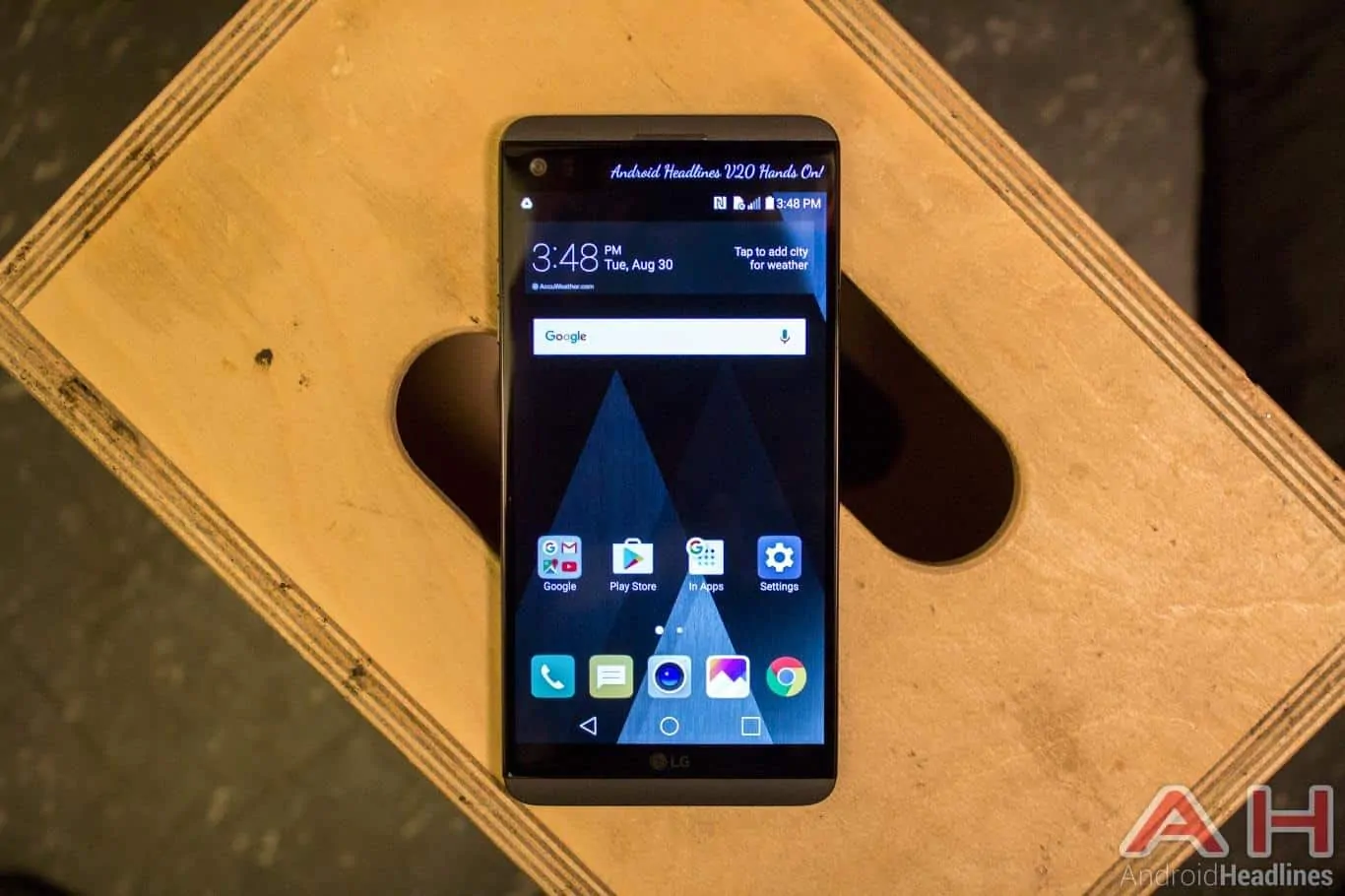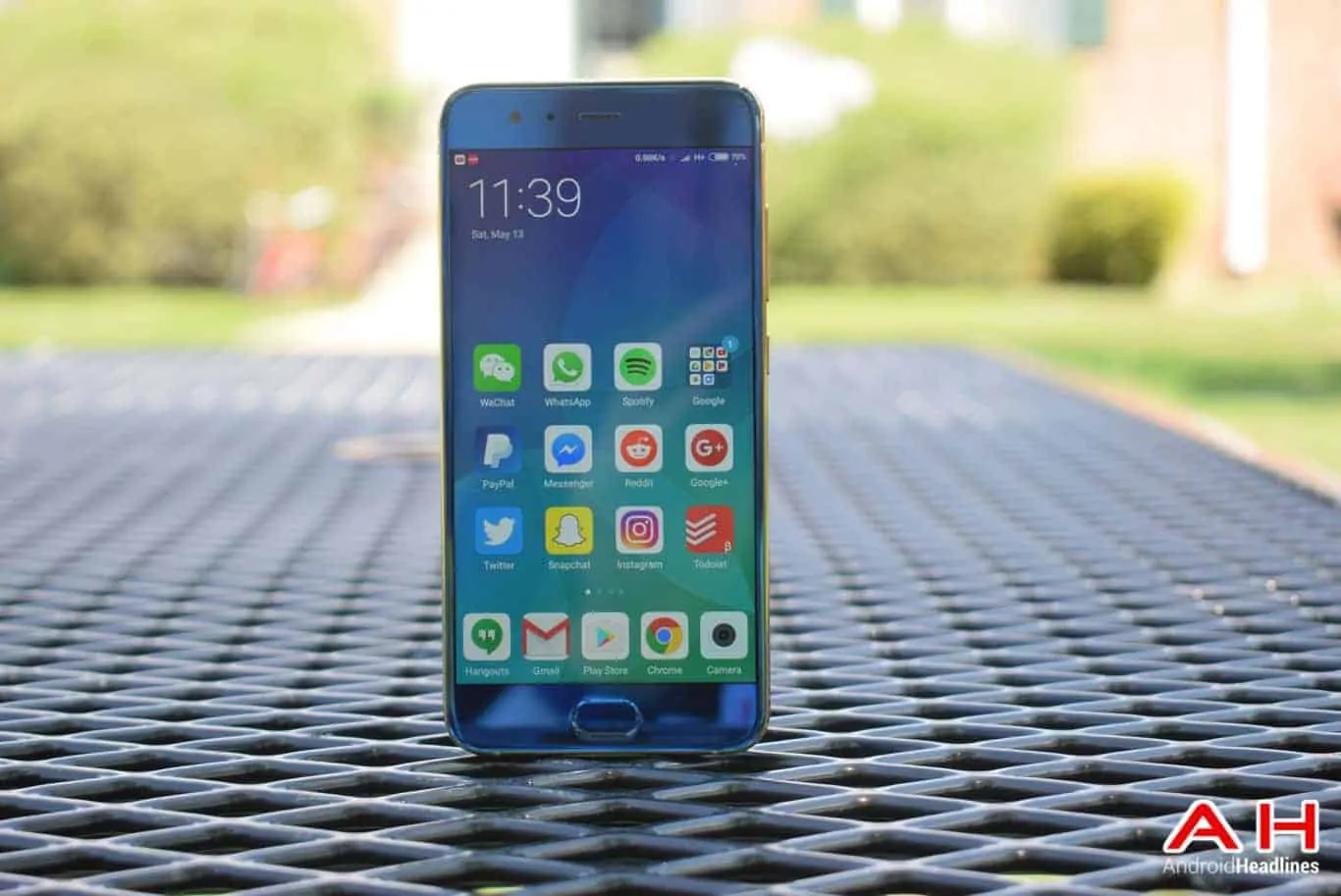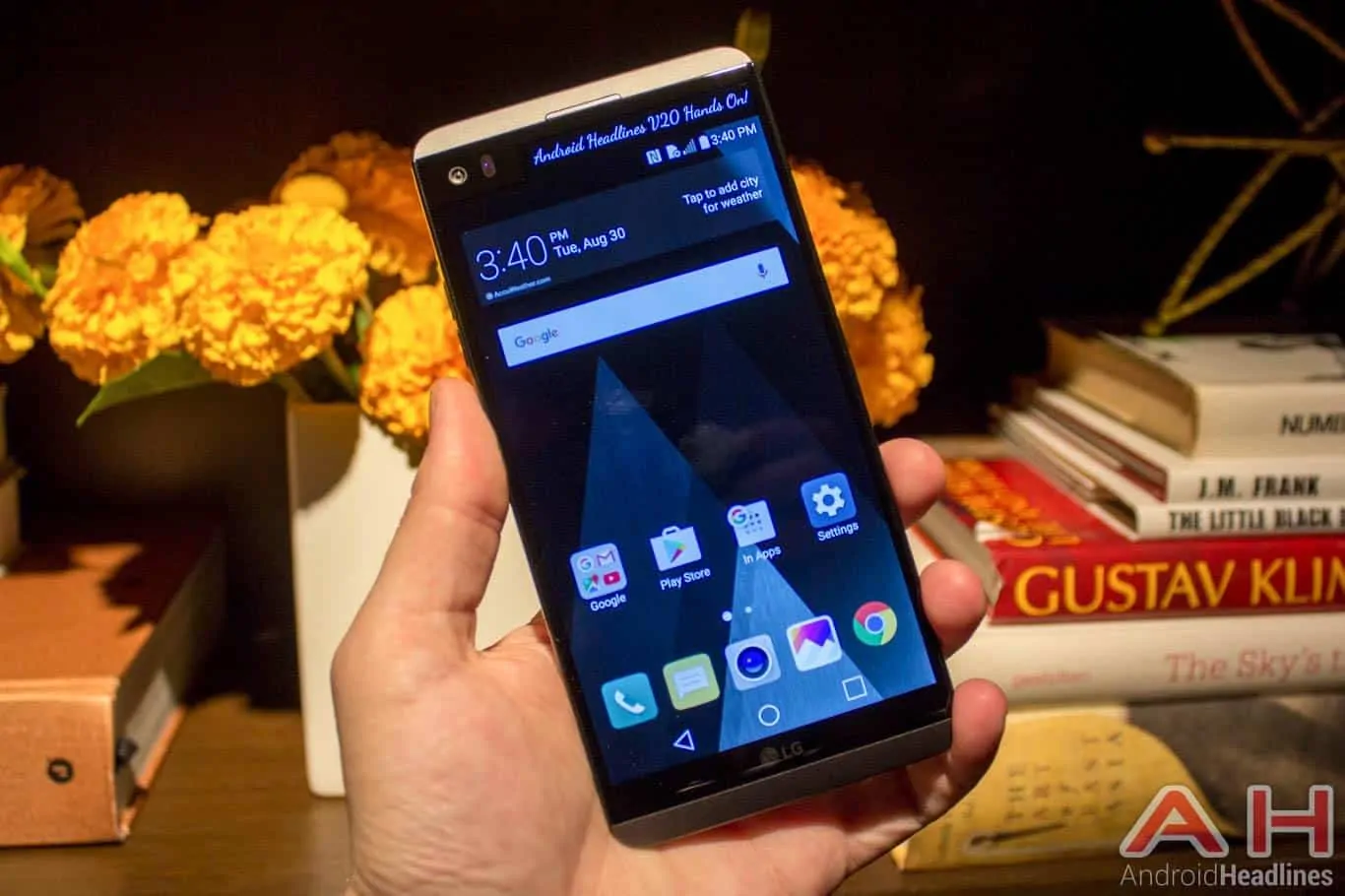Introduction
The LG V20 faces off against the Xiaomi Mi 6 in today’s head-to-head. While the Mi 6 is the latest flagship smartphone from the Chinese company that was the biggest smartphone vendor in its homeland not so long ago, the LG V20 is the second-generation V-series device from the South Korean electronics manufacturer that has often lived in the shadows of its bigger and more celebrated hometown rival, Samsung. The two devices both come with all the standard features you’d expect from premium Android smartphones in 2017, but also include a few quirky but novel design elements. So which one is right for you if you’re still sitting on the fence? We’ll try to find that out over the course of this comparison.
Specifications
LG V20
The LG V20 was officially launched late last year, and was one of the first devices apart from the Google Pixel and Pixel XL to come with Android Nougat pre-installed. It is a feature-rich smartphone that was widely praised in the media for being one of the best phones released last year, and continues to remain a great device to buy even though its successor, the V30, is expected to launch fairly soon. Like its predecessor, the LG V20’s USP is its dual-screen setup, something that may well be done away with in the V30 if some of the recent rumors are to be believed. The device comes with two screens, three cameras and a whole host of neat, thoughtful features.
The primary display on the LG V20 is a 5.7-inch IPS LCD panel with a WQHD resolution of 2560 x 1440 pixels, while the second screen measures just 2.1-inch in size and really, is more of an extension on top of the main display panel, but it operates independently. It comes with a resolution of 1040 x 160 pixels and, can be configured to display app shortcuts, music player controls or quick tools for most-used functions. The device is powered by a Qualcomm Snapdragon 820 which comes with an integrated CPU with 4 custom Kryo cores. While two of them are clocked at 2.15 GHz, the other two are clocked at 2.16 GHz. The device also ships with 4GB of RAM and either 32GB or 64GB of built-in storage that can be expanded by way of a microSD card.
Photography options on the LG V20 include a dual camera module on the back, which incorporates a 16-megapixel 1/2.6-inch sensor paired with a 29mm equivalent lens with an f/1.8 aperture. There’s also an 8-megapixel 1/3.2-inch sensor mated to a wide-angle 12mm equivalent lens with an f/2.4 aperture. Other features include geo-tagging, touch focus, face and smile detection, panorama and HDR mode. As for the front-facing camera, it comes with a single 5-megapixel sensor with an f/1.9 lens. The device comes with a removable 3,200 mAh Li-Ion battery with support for Qualcomm’s Quick Charge 3.0. In terms of software, the LG V20 comes with Android Nougat pre-installed. It’s also expected to get updated to Android O at some stage.
Connectivity options on the LG V20 include an USB Type-C port for charging and data syncing, but the device also comes with a 3.5mm audio port for compatibility with older headphones. Sensors on the LG V20 include a rear-facing fingerprint scanner, accelerometer, gyroscope, proximity sensor, magnetometer (e-compass) and color spectrum sensor. The LG V20 also comes with an NFC chip for compatibility with mobile payment platforms like Android Pay and an infrared blaster that allows you to use it as a remote. The device is fairly large by any yardstick, measuring 159.7mm in length, 78.1mm in width and 7.6mm in thickness while weighing in at a rather hefty 174 grams
Xioami Mi 6
Xiaomi launched the Mi 6 earlier this year at an event in Beijing, China. The device follows the same design aesthetic as seen in the Mi 5, and comes with an all-glass build wrapped around a sturdy stainless steel frame. The device is splash resistant (although, not fully waterproof), and comes with a dual-camera setup at the back. The device has widely been praised for its design, the battery life and camera quality, and it’s not difficult to see why, once you use it for a period of time. On the back, the device has a 3D glass panel curved on all four sides, while on the front, it features a standard 2.5D curved glass display. Both panels are protected by Corning Gorilla Glass 5, which safeguards them from scratches and minor impact. One the back, the twin cameras come with rounded metal rims on the standard version, while on the pricier Ceramic Edition, those are made out of 18-karat gold.
While design is definitely one of the highlights of the Xiaomi Mi 6, the device also comes with some really impressive hardware under the hood. It features a 5.15-inch IPS LCD capacitive touchscreen display with a resolution of 1920 x 1080 pixels, giving it a pixel density of 428 dpi. It’s powered by a Qualcomm Snapdragon 835 SoC that comes with a 64-bit CPU with eight custom Kryo 280 cores, four of which are clocked at 2.45GHz and four others at 1.9GHz. There’s also an Adreno 540 GPU to take care of all the graphics processing needs. The device packs 6GB of RAM, and is offered in two different storage options – one with 64GB of internal storage, and another, with 128GB of built-in storage.
Coming to the part that has often been highlighted by Xiaomi as one of the major attractions of the Mi 6, the device ships with a dual-camera module on the back. While one of the two cameras has the 12-megapixel 1.25µm Sony IMX386 sensor paired with a 27mm equivalent lens with an f/1.8 aperture, the other one comes with a telephoto lens with 56mm focal length and f/2.6 aperture and 1µm pixels. The rest of the features of the Mi 6 are also along expected lines, with a long list of connectivity features that include dual-band Wi-Fi 802.11 a/b/g/n/ac, Wi-Fi Direct, DLNA and Bluetooth 5.0, while cellular connectivity includes support for GSM, HSPA, LTE, CDMA and EVDO technologies. The device also supports GPS with A-GPS and GLONASS, while an NFC chip ensures you can use it for Android Pay.
The Xiaomi Mi 6 also ships with a USB Type-C port for charging and data syncing, but like many of its peers, gets rid of the 3.5mm audio port. However, Xiaomi does include a 3.5mm analog adapter with the retail box, so you’ll still be able to hook up your Mi 6 with your older headphones and audio systems without having to buy the adapter separately. The Mi 6 carries a non-removable 3,350mAh battery and ships with Android 7.1.1 Nougat in the form of MIUI 8. The device measures 145.2mm in length, 70.5mm in width and 7.5mm in thickness. While the standard version weighs 168 grams, the ceramic version tilts the scales at 153 grams.
And The Winner Is …
The Final Word
This one was a real tough one and I had to do a lot of soul searching to reach the conclusion that I did. The Mi 6 is a great smartphone any which way you look at it, but the LG V20 is also a nice, well-rounded smartphone in its own right. The reason it edges out the Mi 6 in today’s comparison is because it is ever-so-slightly ahead of its rival in quite a few areas. The LG V20 has a larger, sharper screen, sports a removable battery and comes with a MIL-STD-810G certification. Even though the V20 is powered by a chip that’s a generation old, the Snapdragon 820 is a robust SoC that powered just about every high-end flagship last year, including the Galaxy S7 and Galaxy S7 Edge. The Mi 6 is certainly a great all-round phone and can do just about anything the V20 does with almost just as much panache, but the latter is in a league of its own, and unless you really prefer the smaller form-factor of a 5.15-inch screen, the LG V20 is certainly worth paying the extra money for.
Buy The LG V20 Buy The Xiaomi Mi 6





